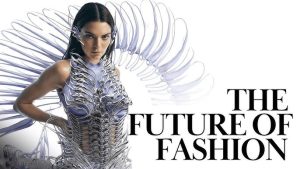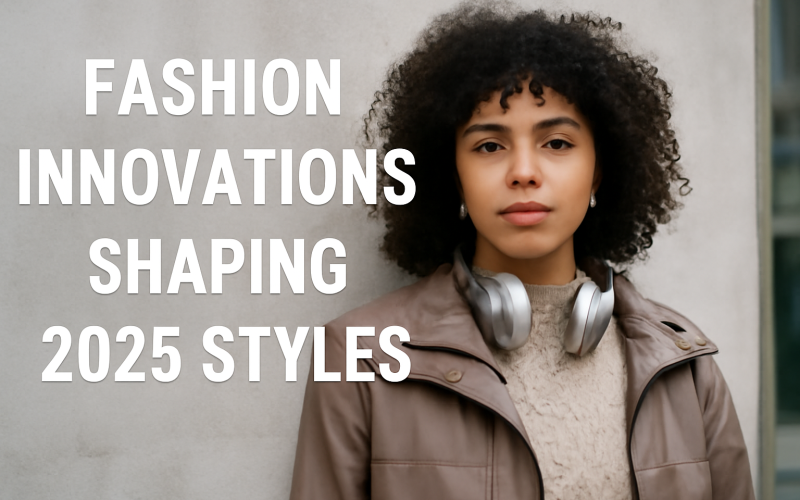Introduction
Fashion is evolving rapidly, and as we approach 2025, new trends will redefine how we dress. From clothing that monitors our health to fabrics that adapt to body temperature, fashion is becoming more tech-savvy and environmentally friendly.
The days of simply buying and wearing clothes are behind us. Designers are now merging technology with style. In 2025, fashion innovations focus on comfort, functionality, and eco-conscious production. Brands are incorporating smart fabrics that can charge devices, experimenting with 3D-printed garments for a custom fit, reducing waste through sustainable practices, and integrating wearable tech to connect fashion with our digital lives.
This article delves into the key trends shaping fashion in 2025. You’ll discover why these innovations matter, how they work, and easy ways to incorporate them into your wardrobe. A helpful table will summarize the key trends. By the end, you’ll see how fashion is stepping into the future.
What Are Fashion Innovations Shaping 2025 Styles?

Fashion innovations shaping 2025 styles refer to new methods, materials, and technologies that transform apparel. They go beyond colors and cuts. Innovations now focus on function, comfort, and environmental impact.
Designers and engineers work together. They develop fabrics with embedded sensors. Designers and engineers use 3D printers to craft custom pieces on demand. They tap AI to predict trends and personalize designs. Even fashion shows are evolving into virtual fashion shows that reach global audiences online.
These innovations help brands reduce excess inventory. They let consumers get pieces made to fit their bodies. They support eco goals by cutting waste and pollution. In short, they change how clothes are made, sold, and worn.
Smart Fabrics: The Next Textile Revolution

Smart fabrics merge digital functions with traditional textiles. They use embedded sensors, conductive threads, or phase-change fibers to add features:
- Temperature Control: Jackets with micro-vents open or close to keep you comfortable, whether you’re hiking or commuting.
- Health Monitoring: Shirts that measure heart rate and posture send data to fitness apps for real-time feedback.
- Energy Harvesting: Solar-sensitive threads soak up sunlight to charge small devices like earbuds or LED accents.
By 2025, these fabrics will be more affordable and widespread. You won’t just pick an outfit—you’ll choose a wearable tool that enhances daily life.
3D Printed Garments: Custom Fit and Fast Fashion

3D printed garments use digital files and layered printing to build clothes piece by piece. This method cuts waste by using just the material needed.
- Perfect Fit: Scanners capture your measurements, so every printed piece hugs your body exactly right.
- Instant Samples: Designers can test new ideas in hours instead of weeks, reducing unsold inventory.
- On-Site Printing: Pop-up shops let you order a custom garment, watch it print, and leave with a brand-new outfit—all in one visit.
By bringing production closer to customers, 3D printing transforms mass customization and sustainable design.
Wearable Tech: Blending Style with Function

Wearable tech adds digital features to everyday apparel. Think smartwatches, but built into rings, bracelets, and even shoes.
- Smart rings can track sleep cycles and alert you to health issues. Fitness trackers in shoes can measure stride length and foot strike, helping runners avoid injury. Clothing with RFID tags can unlock doors or act as payment devices.
- High-fashion brands have partnered with tech firms to launch smart handbags that charge phones inside. Jackets with built-in headphones and microphones let you take calls hands-free.
As wearable tech enters the mainstream, expect seamless integration. Your outfit won’t just look good. It will also keep you connected, safe, and informed.
Sustainable Fashion and Eco-Friendly Materials

Sustainability remains a key driver of fashion innovations shaping 2025 styles. Consumers want clothes that respect people and the planet.
- Brands turn to eco-friendly materials like recycled polyester, organic cotton, and fabrics made from algae or pineapple leaves. These fibers reduce water use and cut greenhouse gas emissions.
- Innovators develop leather alternatives from mushrooms or lab-grown collagen. They create dyes from fruit peels, avoiding toxic chemicals. Some companies offer take-back programs where old garments are shredded and rewoven into new fabrics.
By 2025, circular fashion—where clothes are designed to be recycled—will be commonplace. Consumers will choose items that they know can re-enter the supply chain at the end of their life.
AI in Fashion: Smarter Design and Personalization

Artificial intelligence is reshaping design and shopping. AI in fashion uses algorithms to forecast trends, analyze fabric performance, and recommend outfits.
- By scanning images from social media, AI predicts colors, shapes, and materials that will be popular. Designers use these insights to sketch new collections with higher success rates.
- Retailers deploy AI chatbots that offer styling advice based on your past purchases and measurements. Virtual fitting rooms let you see how clothes look on your body type.
- Back-end AI can optimize inventory, reducing overproduction. It matches supply to demand in real time, cutting markdowns and waste.
In 2025, AI will be a core part of every fashion house, from concept to checkout.
Tips to Embrace 2025 Fashion Innovations
Embracing these trends is easier than you think. Here are simple tips:
- Start with one smart item, like a temperature-regulating shirt.
- Shop sustainable brands that use recycled or plant-based materials.
- Try a virtual fitting room app before making big purchases.
- Follow design studios that share 3D printed pieces online for style ideas.
- Use AI styling tools to discover looks that match your shape and taste.
Small steps help you adopt fashion innovations shaping 2025 styles without feeling overwhelmed.
The Future of Fashion Innovations Shaping 2025 Styles

Looking ahead, the future of fashion is bright, with many exciting innovations on the horizon. In 2025 and beyond, we can expect to see more eco-conscious designs, with fashion brands focusing on sustainable production methods and materials. Smart clothing will become more advanced, integrating features like fitness tracking or even changing color to match the wearer’s mood or environment. Fashion will also become more inclusive, with innovations aimed at creating clothing that fits and flatters all body types. With the continued rise of personalized shopping experiences, consumers will have more control over their fashion choices, leading to a more customized and inclusive industry. As technology and sustainability continue to shape the fashion world, 2025 will bring a wave of creative and practical innovations that redefine how we express ourselves through style.
Comparative Table: Key Fashion Innovations at a Glance
| Innovation | Description | Benefit |
|---|---|---|
| Smart Fabrics | Textiles with embedded sensors and threads | Health tracking, comfort, device charging |
| 3D Printed Garments | Layered printing of clothing | Custom fit, reduced waste, fast prototyping |
| Wearable Tech | Apparel with integrated electronics | Connectivity, safety, hands-free features |
| Eco-Friendly Materials | Sustainable fibers and dyes | Lower environmental impact |
| Virtual Fashion Shows | Online and VR runway events | Global reach, lower costs, inclusivity |
| AI in Fashion | Data-driven design and personalization | Trend accuracy, efficient inventory |
Conclusion
Fashion in 2025 will be a fusion of art, technology, and ethics. Smart fabrics will keep us comfortable and informed. 3D-printed garments will offer flawless fits. Wearable tech will blend style with connectivity. Sustainable materials will protect our planet. Virtual runways and AI tools will reshape design and shopping. By embracing these innovations—one smart piece, one recycled fiber, one VR show at a time—you’ll step confidently into the next era of style.










